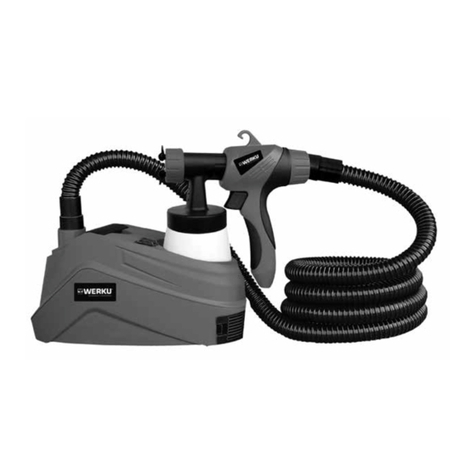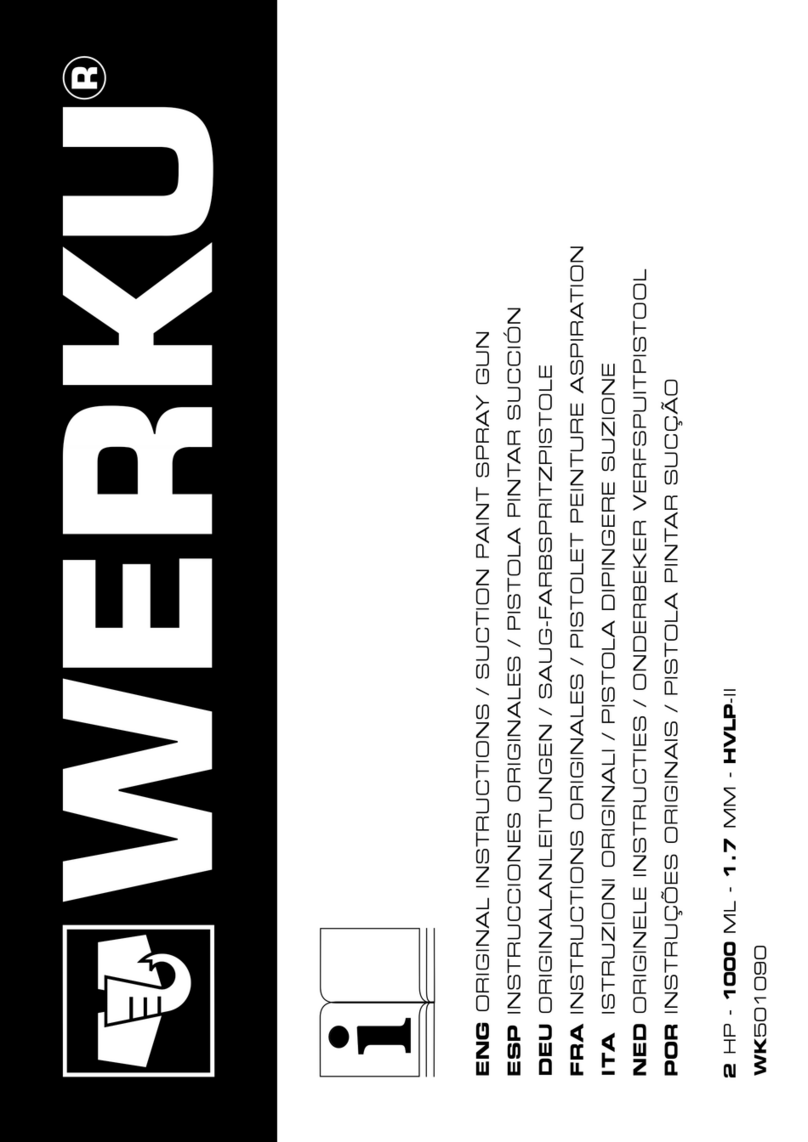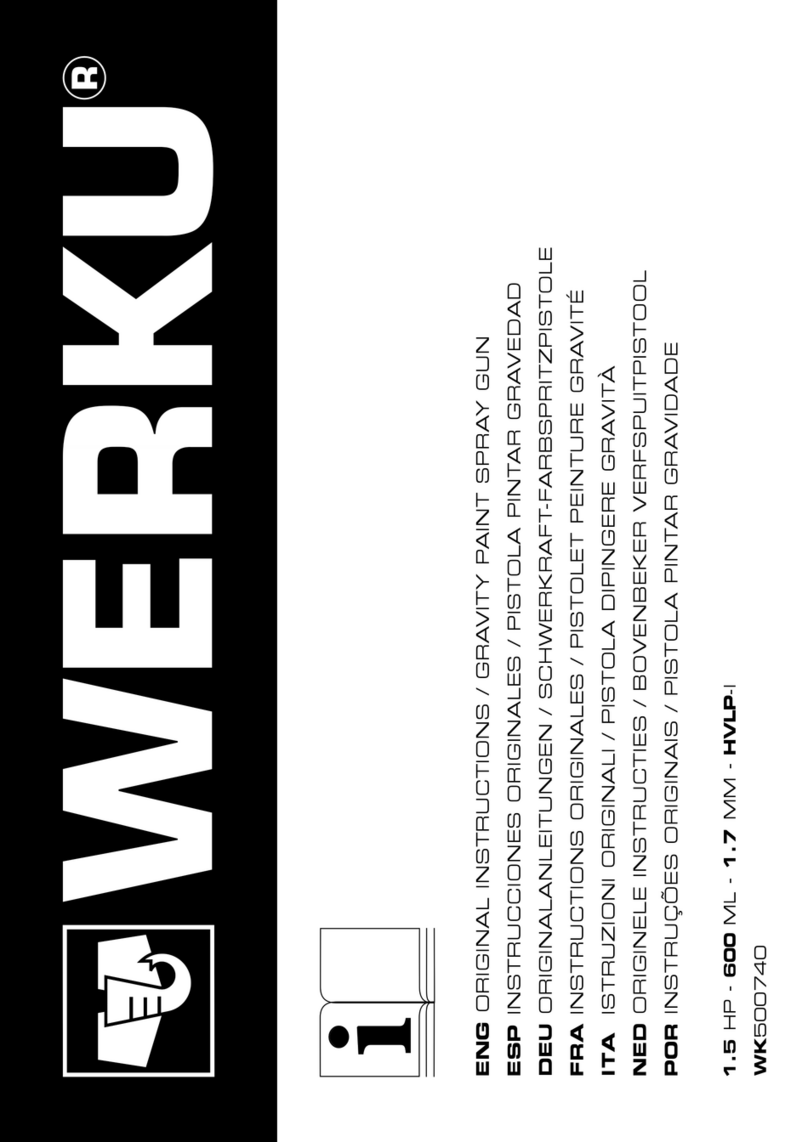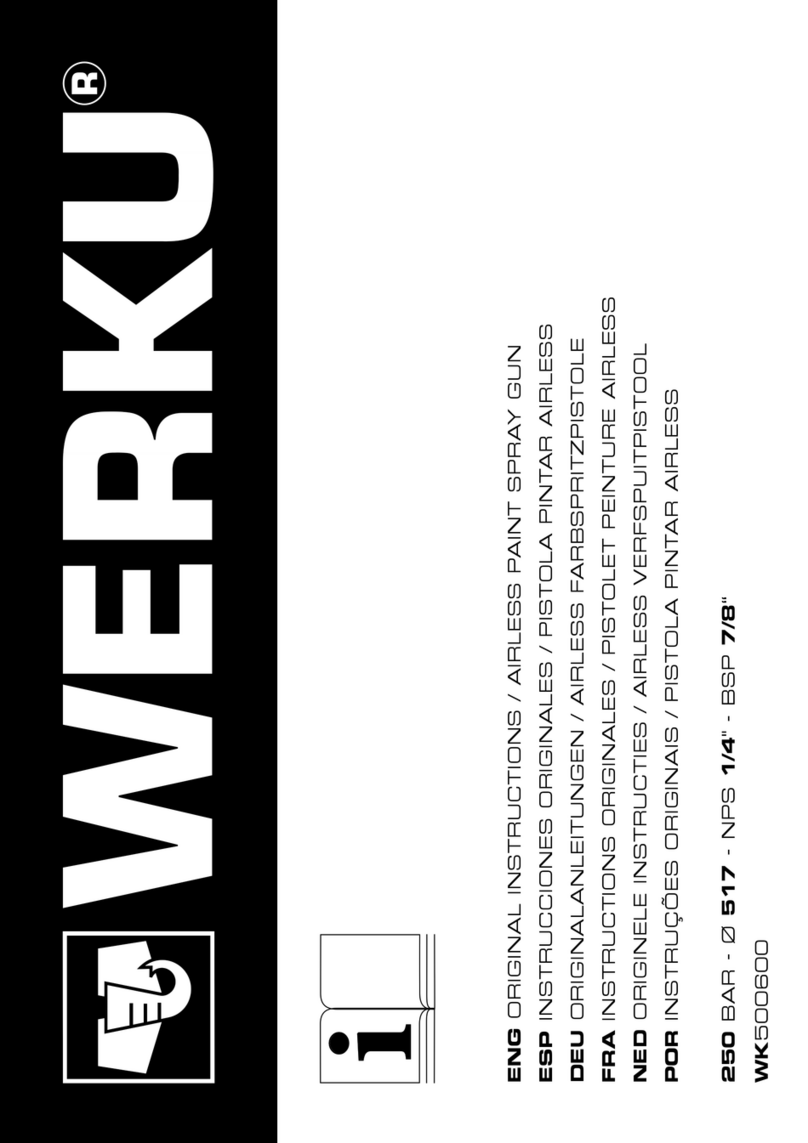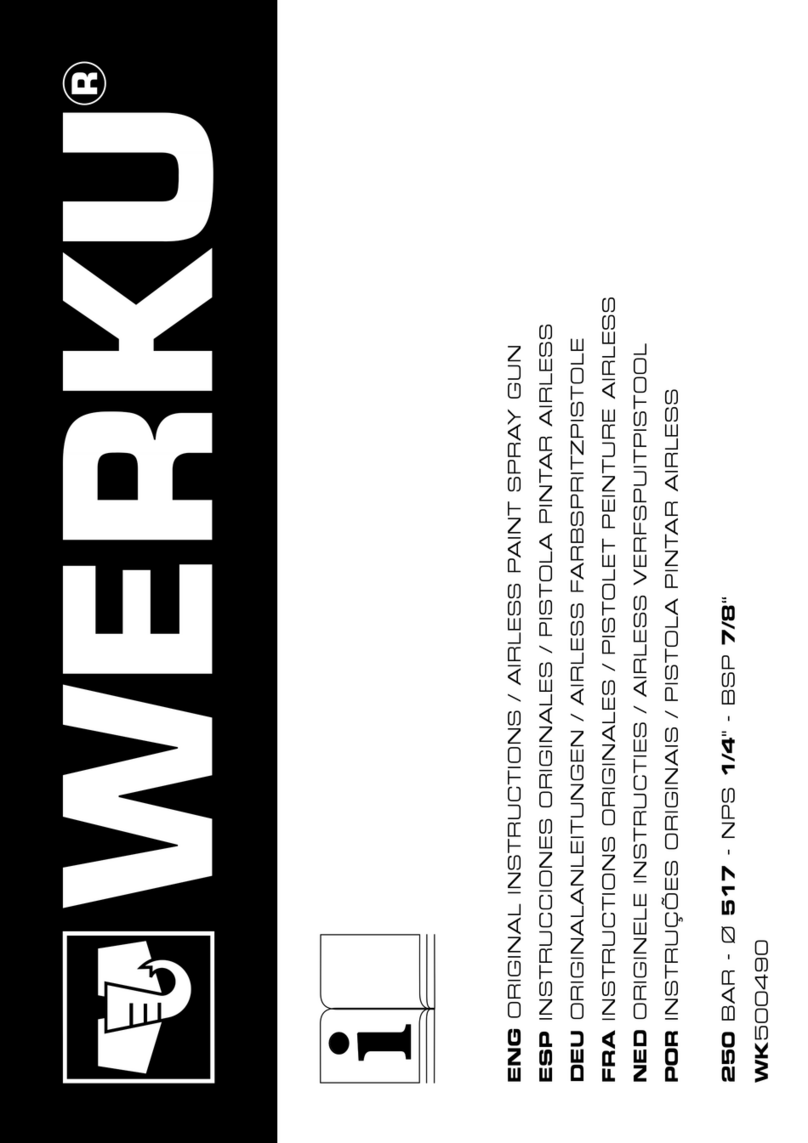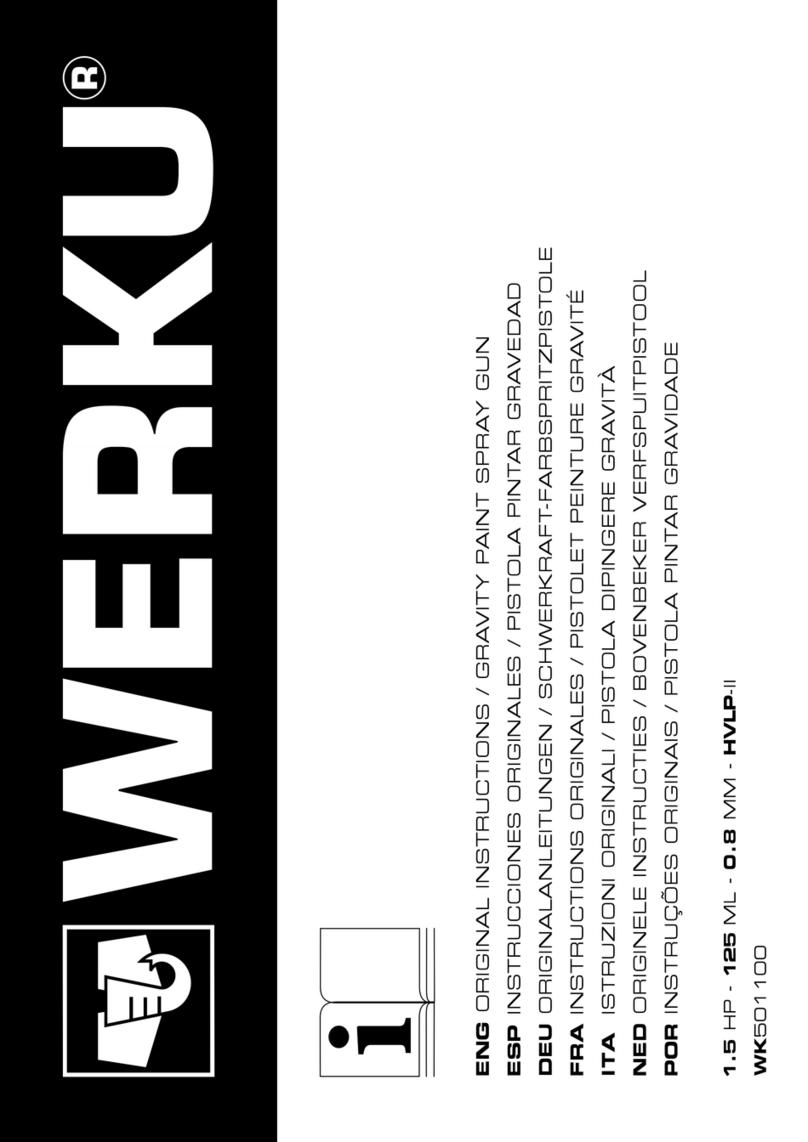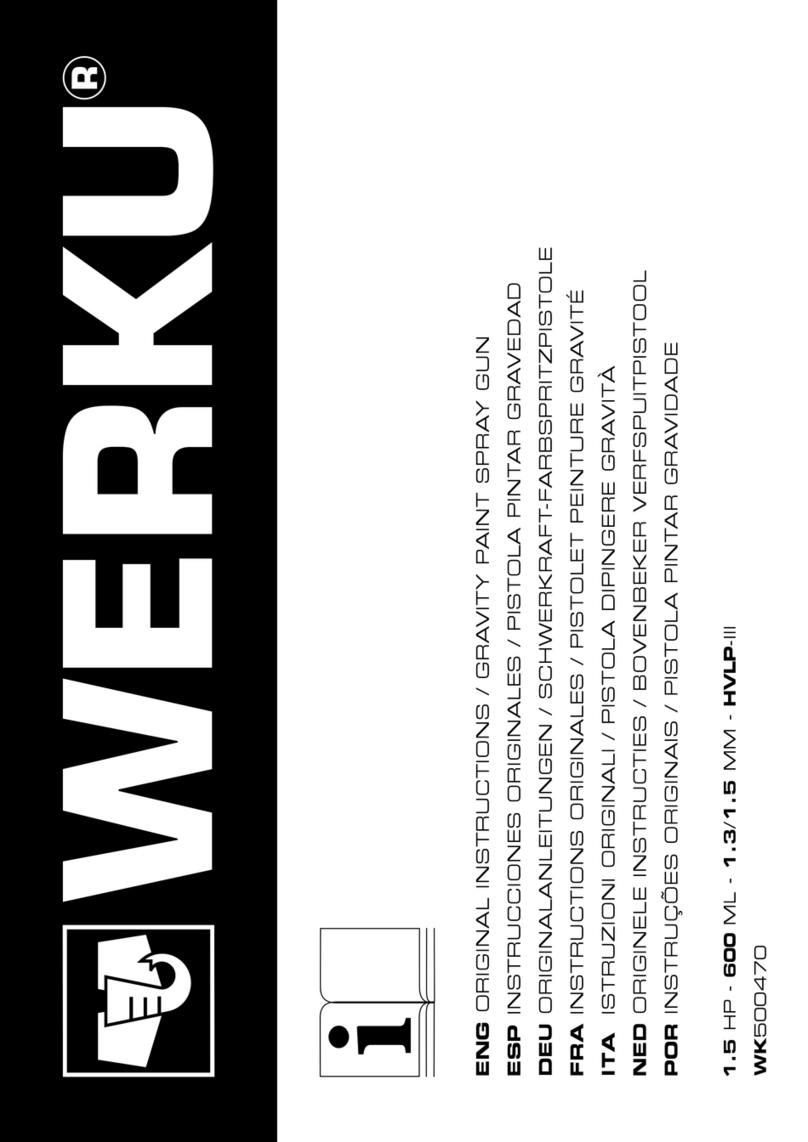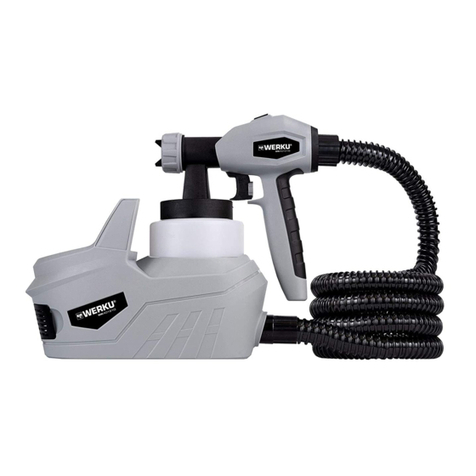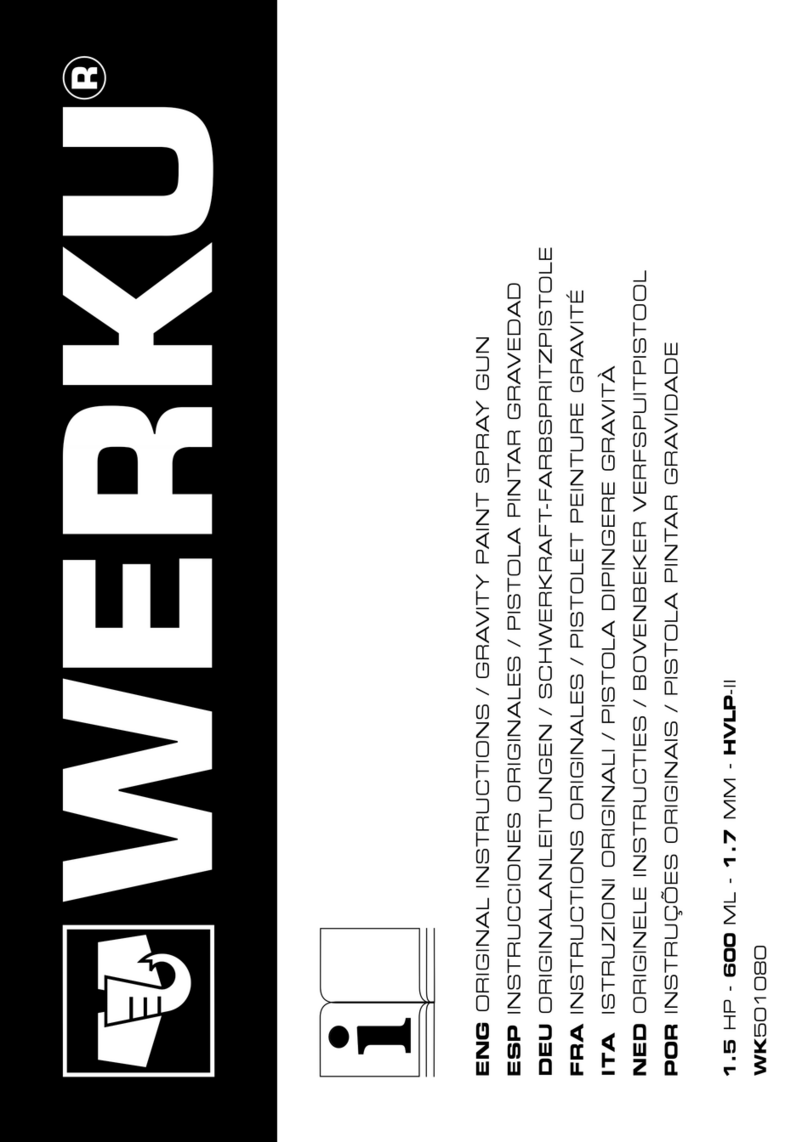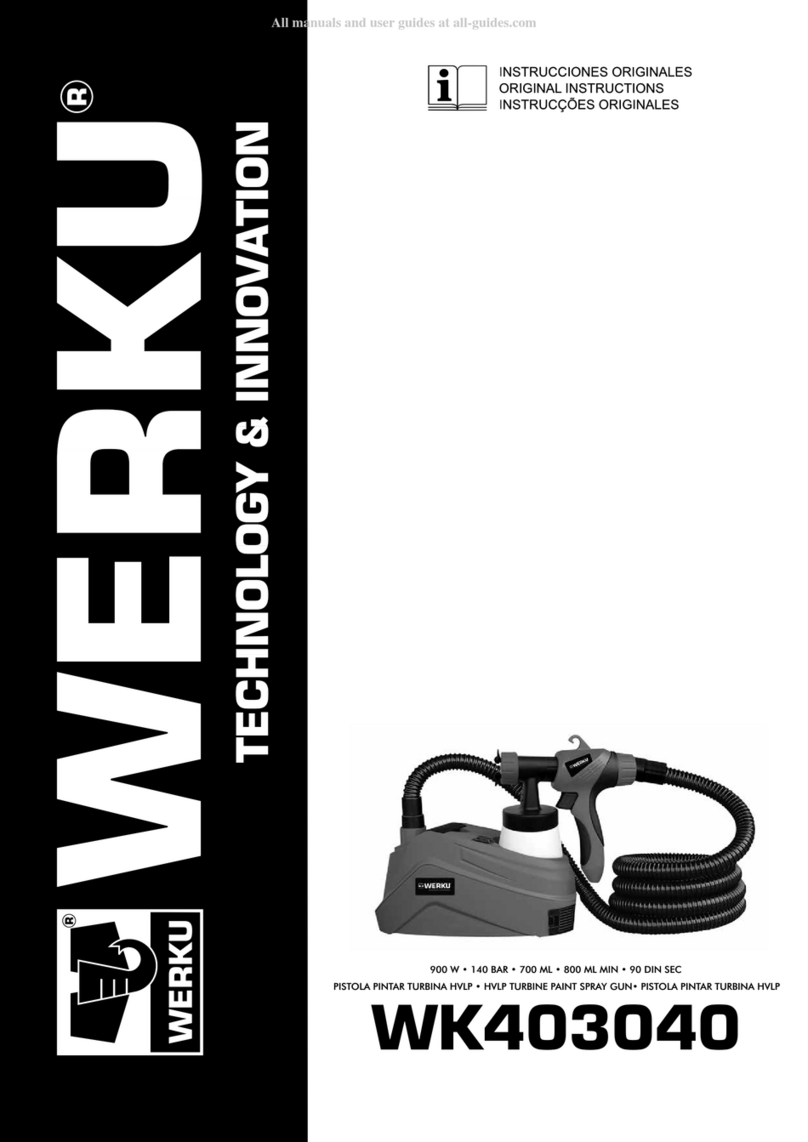
6
English
ENG
MAINTENANCE.
►Follow all safety precautions as described in the
safety precautions section of this manual before
proceeding ►Refer to the parts list section in this
manual for part identication.
REPLACING/REMOVING FILTER.
►Pull the bottom of the trigger guard forward so
that it comes loose from the handle assembly (9)
►Loosen and remove the handle assembly from
the airless gun head (10) ►Pull the old lter out of
the gun head (11) ►Slide the new lter, tapered
end rst, into the airless gun head (12) ►Place
the handle seal into the airless gun head with the
at side of the seal toward the gun head ►Thread
the handle assembly into the airless gun head
until secure ►Snap the trigger guard back onto
the handle assembly.
FILTER CHART.
Application
Synthetic resin, enamels, clean varnishes, stains, azures
Base coat enamels, primer enamels, llers, marking
paints, textured enamels
Filler paints, large area surfaces
Emulsions, latex paints, acrylic paints
Filter type
Extrane
Fine
Coarse
Medium
ENVIRONMENT PROTECTION.
►The materials and components that have
been used to manufacture this product can be
re-used and recycled ►Werku®is adhered to
an Integrated Management System that is in
charge of the correct elimination of the residues
of this product. ►Do not eliminate this product
with domestic residues ►Werku® oers to its
clients a free collection service of these residues
through any of its sale points, or in the collection
points established by the Integrated Management
System or in the recycling point of your locality.
WARRANTY AND TECHNICAL SERVICE.
►Apart from the legal guarantee, Werku® oers an
additional commercial guarantee ►This commercial
guarantee covers the repair of all defects found due
to faults in the materials or manufacture ►For this
cover to be eective it is necessary for these defects
to appear within the validity period ►The consumer
is entitled to free repair of all defects that Werku®
recognises as included in the commercial guarantee
(shipping costs, labour costs and materials included)
as chosen by Werku®, either via the repair or by
replacement (if necessary with a later model) ►This
commercial guarantee does not aect consumer’s
rights established by law according to Directive
1999/44/CE ►This commercial guarantee is valid
for 24 months ►If this product is destined for
professional or industrial use, the validity period is
12 months ►The validity period starts on the date of
purchase by the rst consumer ►This date is shown
on the invoice or receipt of purchase ►Actions for
claims against this commercial guarantee expire
six months from the end of the validity period ►Any
claims arising from this commercial guarantee must
be presented to the distributor or the Technical
Assistance Service ►To do so you must present this
guarantee correctly completed and stamped by the
distributor, together with the sale invoice or receipt
►In order to require any information in relation to this
commercial guarantee, the buyer and/or distributor
may contact the Technical Assistance Service by
telephone on +34 981 648 119, or by e-mail at info@
werku.com ►This commercial guarantee does
not cover defects caused by parts that have worn
out from use other types of natural wear, defects
caused by failure to observe the instructions for
use and operation, or for applications other than
those for which this product is intended, abnormal
environmental factors, overloading, or unsuitable
maintenance or cleaning, faults caused by the use
of spare parts, accessories or replacements that
are not original Werku®parts, if the product has
been totally or partially disassembled, modied
or repaired by personnel other than that of the
Technical Assistance Service or minimum and
irrelevant irregularities for suitable use or operation
►Repairs and replacements will not extend or renew
the validity period of this commercial guarantee
►The replaced parts will become the property of
Werku®►If the buyer sends the product to the
Technical Assistance Service, and it fails to comply
with the conditions of this commercial guarantee,
all expenses and transportation risks shall be paid
by the buyer ►This commercial guarantee is only
valid within the territory of the European Union ►The
company responsible for the compliance of this
Werku®commercial guarantee is Werku Tools SA.
TECHNICAL ADVICE.
►
The technical department of Werku®is at your
disposal to resolve any questions you may have
regarding to its products ►If you wish to contact our


